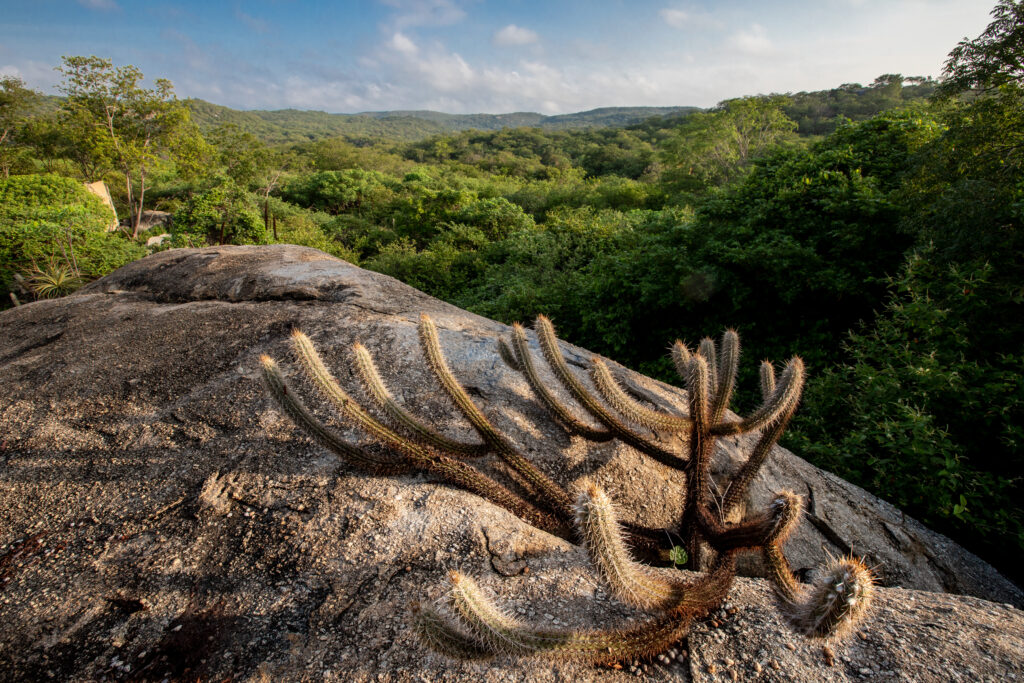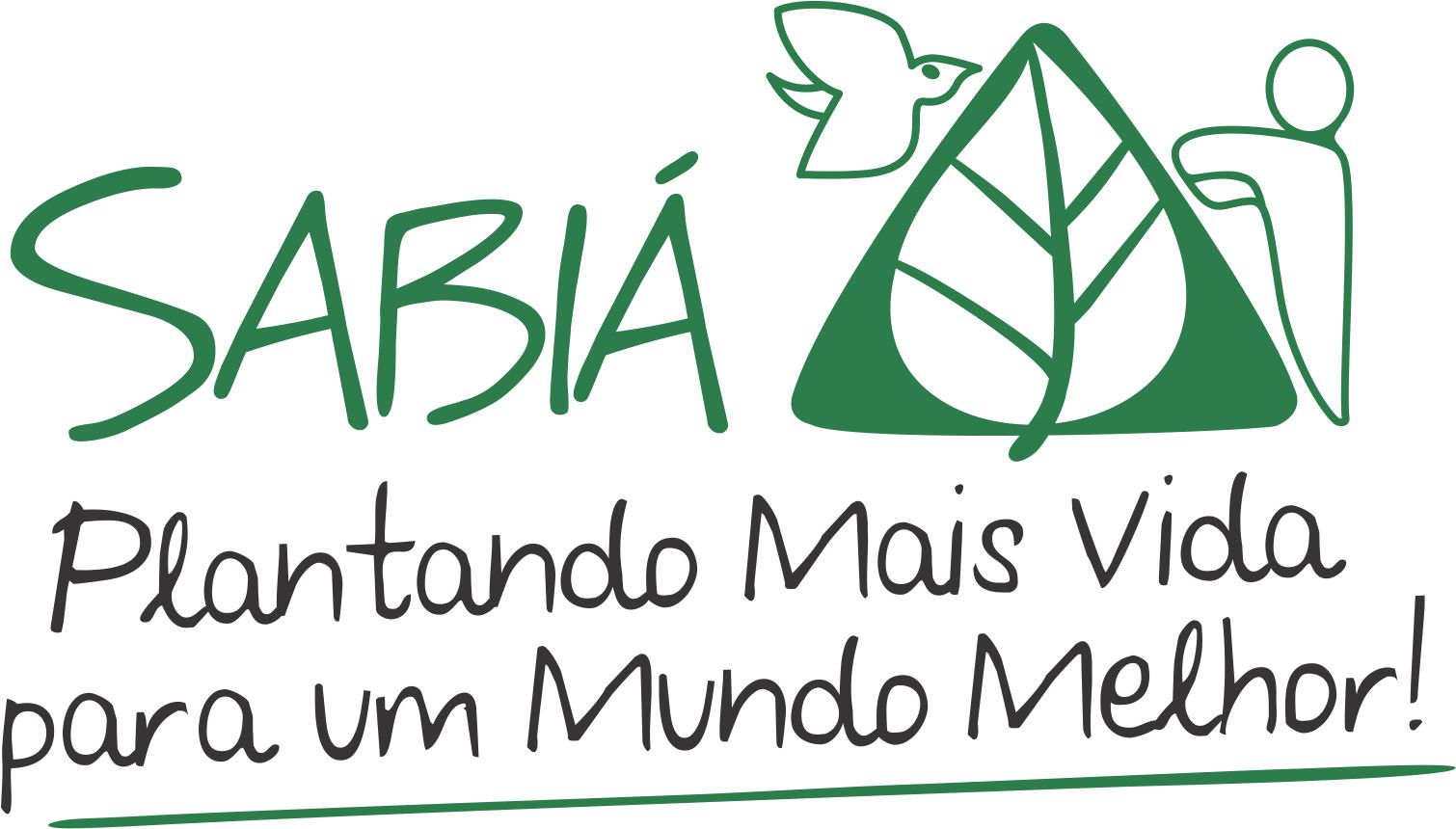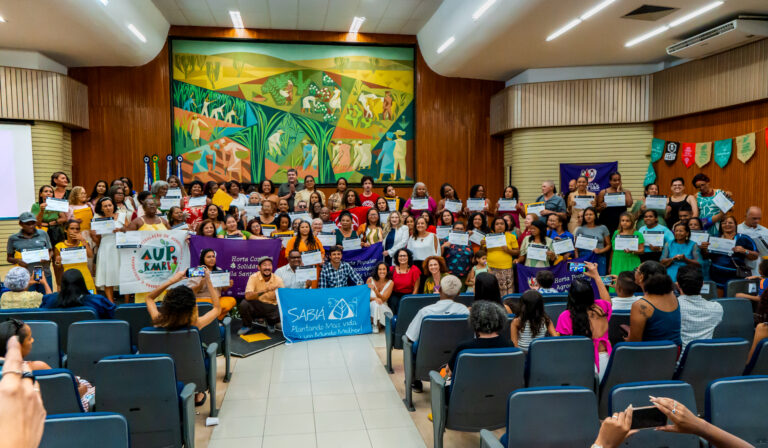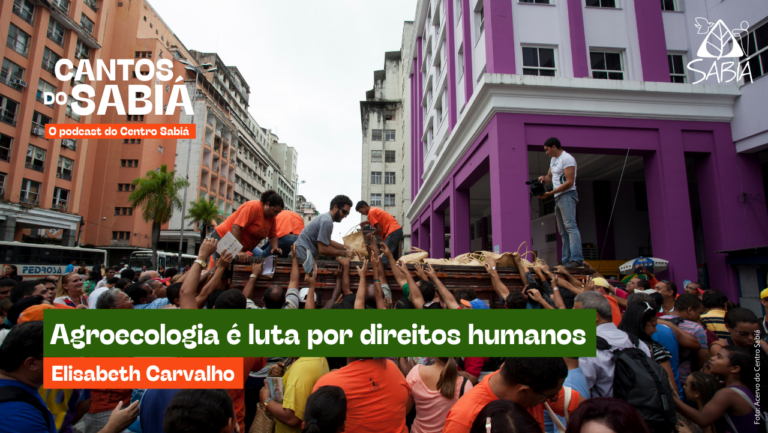THE IMPORTANCE OF THE CAATINGA FOR CARBON SEQUESTRATION
By Aldrin Martin Perez Marin and John Cunha, Coordinators of the Caatinga and Desertification Observatory

The Caatinga Biome is the dominant native vegetation of the Brazilian semi-arid region. A vast area of approximately 860,000 km² of seasonally dry forest, with the occurrence of 3,347 species, of which 526 are endemic, distributed in 962 genera and 153 families, it is today considered the area of greatest biodiversity in the Neotropics, recognized as one of the most important wildlife areas on the planet. Soils in the Caatinga vary from the youngest, such as NEOSSOLS, to the oldest, such as LATOSSOLS, which, due to pedogenetic processes, result in a combination of 625 soil types.
The stigma that the climate was responsible for a Caatinga biome poor in species and socio-environmental services has been combated by increasing the number of scientific studies over the last 24 years, which have shown high levels of richness, diversity and endemism. In addition, it has been found to provide a number of socio-environmental services, which have not been properly addressed, including: a) Regulation of the local and global climate; b) Improving air quality; c) Erosion control; d) Maintaining soil health; e) Pollination of various plants; f) Seed dispersal; g) Drought and flood control; h) Biological control of pests and diseases; i) Regulation of air humidity; j) Cultural services; k) Wood for our buildings; l) Medicinal plants and a very important service that is attracting attention in the face of climate change and desertification processes: CARBON SEARCHING .
Studies carried out by the National Observatory on Carbon and Water in the Caatinga have shed light on the extraordinary role of the Caatinga Biome in the regional and globalCO2 balance. The National Caatinga Observatory is part of a select group of 102 projects of the National Institutes of Science and Technology of the National Council for Scientific and Technological Development – CNPq/MCTI. It is a multidisciplinary network of national and international researchers working on experimental research and modeling of water and carbon dynamics in the Brazilian semi-arid region. Since 2010, this network has been studying the dynamics and seasonal variation of carbon, water and energy in the Caatinga Biome in its three major components a) Soil, b) Vegetation and b) Atmosphere, through a set of towers installed in Caatinga and pasture areas.
The Observatory’s network of researchers is made up of 13 universities (UFPE, UFRN, UFRPE, UFCG, UFS; UFPB, UFAPE; UPE; EPE; IFPE, IFRN, IFSERTAO, UFAPE, UFOPA), 6 research institutes (CENA, EMPARN, INPE, IPA, INSA, EMBRAPA) and 5 international institutions (Texas A&M and Duke, USA; Princenton University; University of Guelph, Canada; IRD, France).
The observatory’s results show that, contrary to popular belief, the Caatinga acts as an excellent sequester ofCO2, even during periods of extreme drought. In areas of hypoxerophilous Caatinga (wetter), the Caatinga sequesters up to five tons ofCO2 per hectare per year. In hyperxerophilic (drier) Caatinga areas, sequestration varies between 1.5 and 2.5 tons ofCO2 per hectare per year.
The results also show that the Caatinga has a high carbon use efficiency, making it the most efficient forest in terms of carbon use than all the other forest types studied worldwide so far. This efficiency is 45% on average. In other words, out of every 100 tons ofCO2 absorbed, it retains 45 tons. Water use efficiency is also very high, ranging from 5.2 to 2.7 kilograms ofCO2 fixed per cubic meter of water transpired.
| Location | NEE* | GPP* | Reco* | CUE (%) |
| Center West Amazon | 5.7 | 3.425 | 3.391 | 2 |
| Central Amazonia | 1.71 | 3.234 | 3.033 | 5 |
| Cerrado | 2.88 | 1272 | 984 | 23 |
| Neotropical Forest French Guiana | 1.57 | 3.720 | 3.500 | 4 |
| Indonesian Rainforest | 3.75 | 3.209 | 3.584 | 12 |
| Crystalline Caatinga | 5.85 | 1,419 | 833 | 41 |
| Crystalline Caatinga | 4.97 | 1,022 | 525 | 49 |
| Caatinga ecology Agreste | 10.36 | 2,169 | 1133 | 62 |
The maximum values of netCO2 sequestration occur before midday and the minimum values at dawn and dusk, due to the fact that the Caatinga’s metabolic activity is more intense in the morning and tends to decrease in the afternoon, mainly due to stomatal action (pore closure to prevent water loss), due to the increase in water vapor deficit.
On the other hand, the peak inCO2 fixation occurs mainly during periods when there is high photosynthetically active radiation available, reaching values that vary between 1.90 and 1072 kilograms ofCO2 per hectare per day.
During the night, generally from 7 p.m. to 5 a.m. local time,CO2 efflux (emission) predominates overCO2 sequestration due to autotrophic and heterotrophicCO2 emissions from the soil and leaf and stem respiration.
| Station | NEEDuring the day | NEEDuring the night |
| Dry-Humid | -7,8 | 2,15 |
| Wet | -11,95 | 2,8 |
| Wet-Dry | -5,9 | 1,65 |
| Drought | -5,7 | 1,4 |
| Annual Average | -7,45 | 1,75 |
When considering the four main land use systems – Dense Caatinga, Open Caatinga, Pasture and Agriculture, with the seven main soil classes that cover 90% of the Caatinga Biome, there are significant amounts of carbon stored in this ecosystem. Areas of dense Caatinga store, on average, around 125 tons of carbon per hectare. Most of this carbon is stored in the soil (72%), followed by above-ground biomass (16%), below-ground biomass (7%), dead wood (3%), leaf litter (1.5%) and herbaceous biomass (0.5%). In turn, areas of open Caatinga store 86 tons of carbon, almost 30% less carbon than dense Caatinga.
These studies show that the Caatinga plays an important role in absorbing significant amounts of atmosphericCO2. In other words, it is an important ally in mitigating the effects of these changes caused by anthropogenic actions.
However, changes in land cover and vegetation vigor are having a direct impact on the components of the carbon balance and, consequently, on the regional and global carbon balance, which will also have major implications for the global water and energy balance. According to projections by the Intergovernmental Panel on Climate Change (IPCC), extreme climatic conditions will worsen, impacting drylands and expanding the Areas Susceptible to Desertification (ASD) and Drought in Brazil. Given these prognoses, desertification is expected to worsen with climate change and vice versa. By increasing the frequency and severity of extreme drought episodes due to climate change, land degradation in arid and semi-arid zones tends to increase or form a “feedback loop” with the loss of vegetation caused by desertification. An increase of 3ºC or more in the average temperature would make the places that currently have the greatest water deficit even drier. Under these conditions, subsistence agricultural production in large areas of the arid and semi-arid zones could become unviable, putting the very survival of man at risk. On the other hand, the rise in temperature, combined with the trend towards more torrential rains, tends to increase soil degradation, affecting agricultural activities.
Over the last 30 years There has been an increase of almost 200,000 km² in the area classified climatically as semi-arid in Brazil and a 21% reduction in the forest area of the Caatinga biome. Currently around four million hectares are severely degraded, causing changes in the geographical patterns of plant and animal species richness, Beta diversity and patterns of woodiness and ecological generalism of Caatinga plant communities.
These findings should be taken into account when developing public policies that support the establishment of payment mechanisms for socio-environmental services provided by the Caatinga. Such mechanisms could help mitigate the effects of climate change, promoting favorable conditions for adaptation to these changes and preventing desertification processes.
As they pointed out, the standing Caatinga sheds light on hopes of combating climate change and desertification. We can say that there are many socio-environmental potentialities in the Caatinga: native fruits, flowers and ornamental plants, many fragrances to be explored, minerals, handicrafts, gastronomy and, above all, the great wealth of phytotherapeutic principles in the vast majority of plants in the region.
Brazil still hasn’t woken up to the riches and the miracle of life blossoming in the Caatinga. As the poet Patativa do Assaré would say: Its riches are worth more than the riches of Aladdin’s kingdoms.
Nothing found.




